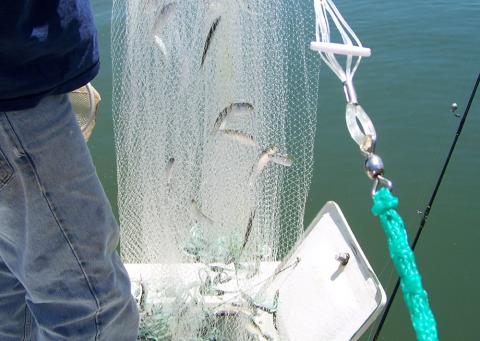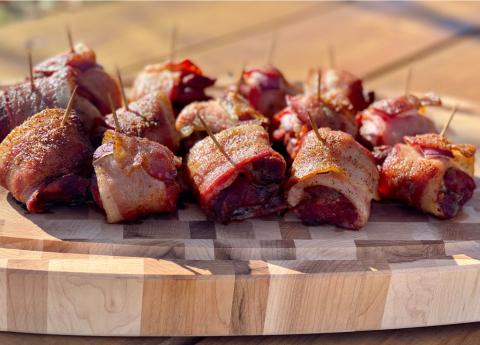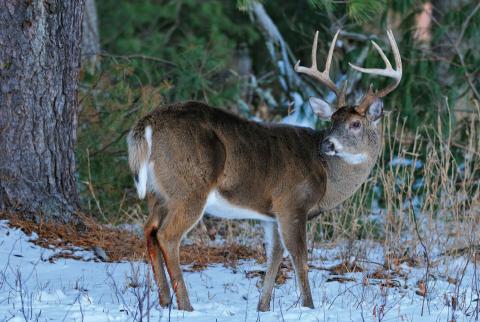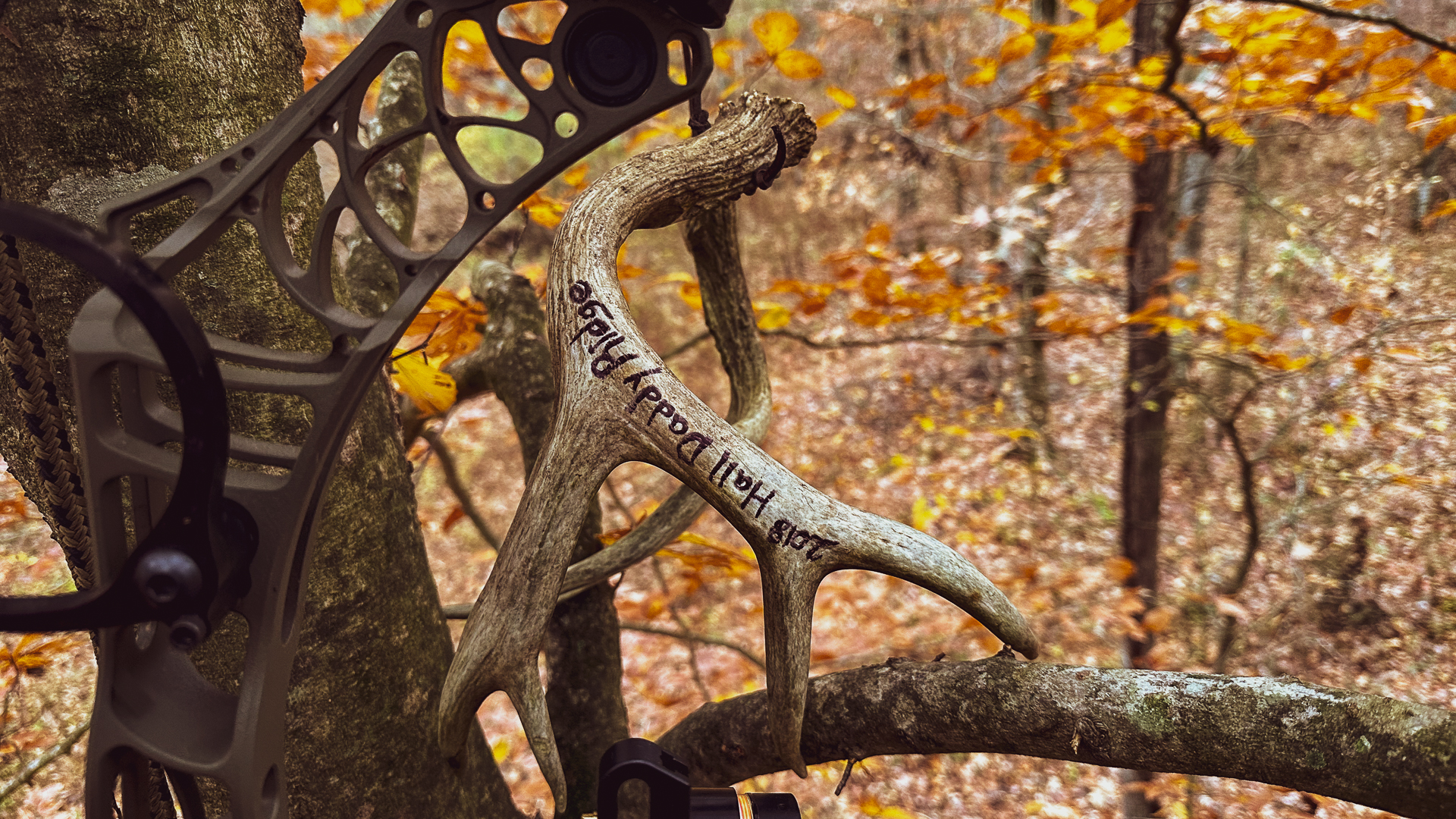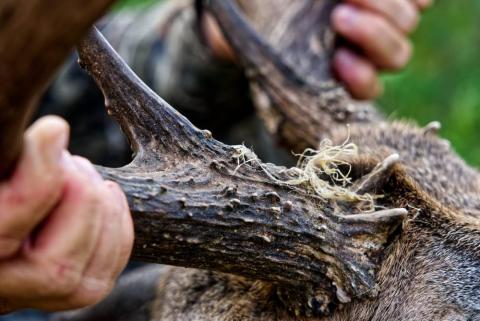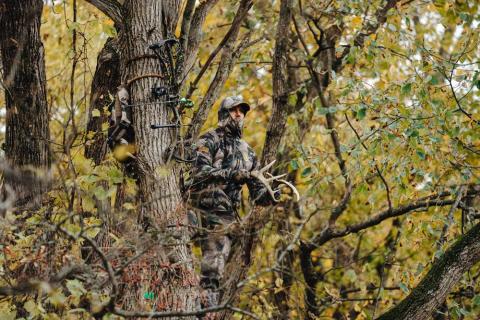How to Fish for Redeye Bass
Will Garrett Mundhenke
Angling for Redeye Bass can become a lifelong endeavor and a pursuit that takes you to the wildest places in the South. These fish are only found in Alabama, Georgia, South Carolina, and small parts of southeastern Tennessee. They are not supported by any hatchery systems and have only rarely been stocked – typically by accident – in other locations such as California, Arizona, and Puerto Rico. With that fact in mind, fishing for Redeye is an effort in finding a fish that is one hundred percent wild, native, and existing in its home water by pure grit and determination.
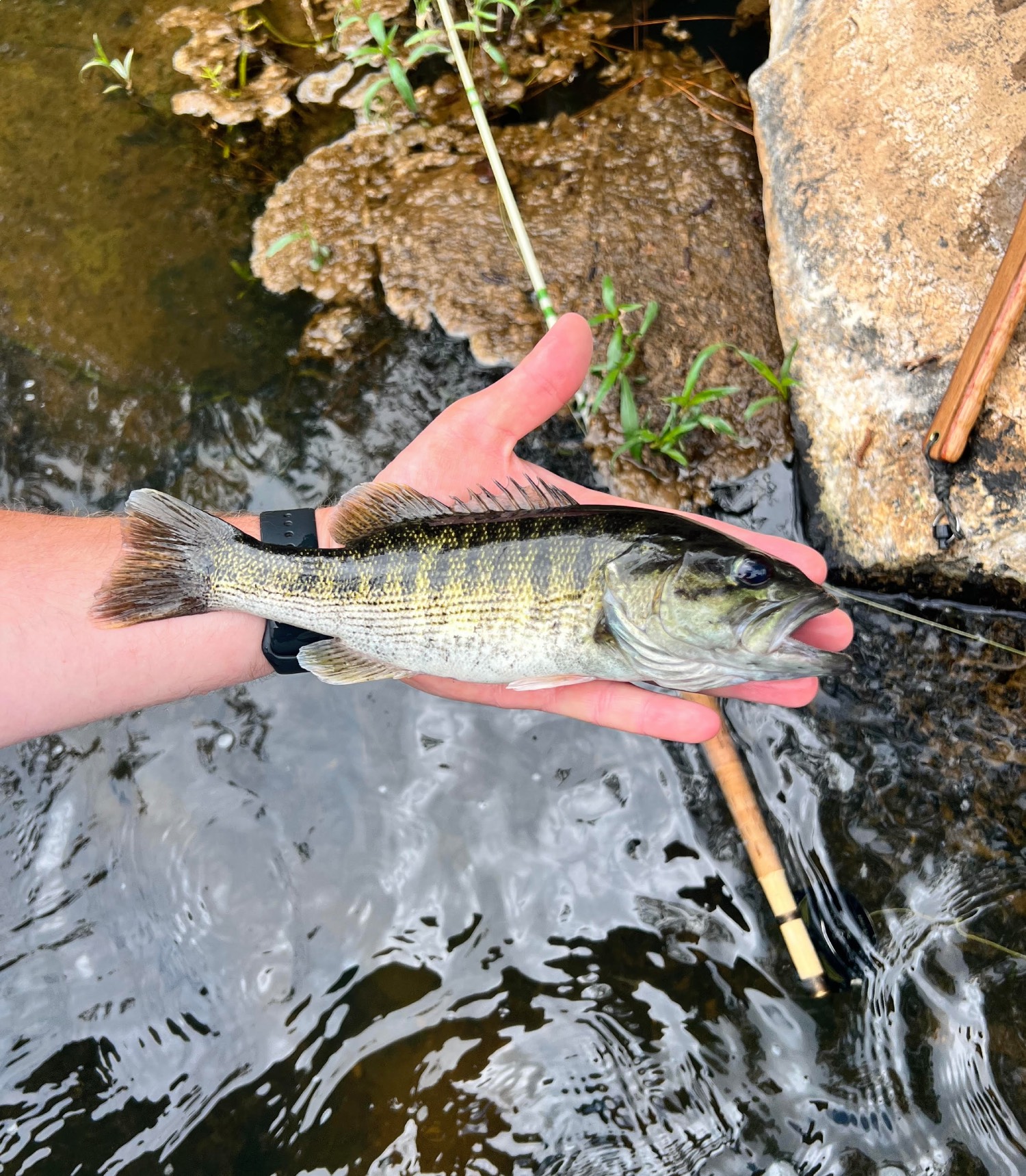
A sizable Bartram’s Bass caught in a small tributary in northern South Carolina.
Redeye Bass Fishing Season
Redeye Bass eat when the weather is hot. While they can technically be caught year round, the most enjoyable experience is during the warmer months. Being a member of the Micropterus genus, they tend to become lethargic as the weather cools. The best time to start fishing for this bass is in April and increases in activity through the Summer until roughly September. October can be a productive month if it is a warmer Fall. The activity drops significantly once the nightly temperatures drop into the 40s. I time my personal Redeye Bass fishing season with the close of Turkey season. Once the birds stop gobbling, it is time to pick up the fly rod until the cooler Autumn temperatures arrive.
Equipment and Gear
Redeye Bass are naturally small in size, growing roughly an inch a year. An 8 inch fish is an adult and a 12 inch fish is a true trophy. Redeye Bass streams are not the place for heavy equipment but ultralight rods and fly rods excel. The greatest following of Redeye anglers chase this fish with a fly rod, but there are a few dedicated anglers that use conventional equipment with great success. The Redeye Bass is a blue collar fish and angling for them can be as inexpensive or as expensive as you wish it to be.
For conventional gear, an ultralight rod that is on the shorter side, think 7 feet and shorter, will help you navigate the often brushy streams where this bass resides. The nimbleness of an ultralight rod can help you appreciate the ferocity with which these small bass fight. I recommend an 8 pound test line in monofilament. Fluorocarbon lines will work just fine but it is not necessary.
For those fishing with a fly rod, I recommend a 3 weight to 5 weight fly rod depending on the size of the Redeye waters being fished. 3 weight and 4 weights in 8 inches of length or shorter excel in smaller Piedmont and Appalachian tributary streams where overhead cover can be an issue. In bigger rivers such as the Savannah River, Tallapoosa River, or Cahaba Rivers, I use a 5 weight fly rod to help with casting distance and to handle the potential bycatches of bigger fish like a Largemouth Bass or Alabama Bass.
In terms of gear transport, Redeye Bass fishing can be an athletic form of fishing. This territory is where fishing backpacks, sling packs, and warm weather vests really shine. Waterproof versions are not necessary but can aid when wading deep or the inevitable plunge.. Water is a necessity so a pack with enough storage to carry a bottle or two and lunch can make the day more enjoyable. I personally use a minimalist strap vest that allows quick access to my equipment but with a rear game pouch large enough to hold a bottle of water and food for the day. Chest packs are equally popular as they allow access to gear without being cumbersome. Redeye fishing is not a gear intensive endeavor, so large heavy packs are not required.
I enjoy wet wading for this fish. A good pair of wading boots and neoprene wading socks go a long way in keeping your toes in presentable shape post-fishing. Many of the finest Redeye streams require a several mile hike to access, so boots should be as comfortable on land as they are on the water. Rubber soles are preferred as felt soled boots have the risk of transporting invasive species if not cared for properly. Many anglers go even simpler and employ a sturdy pair of hiking sandals that can get wet without being damaged. The risk is slippery rocks and busted shins but a little caution while wading can ensure the day is an all around success regardless of your footwear choice.
Redeye Bass Lures and Flies
The sport of Redeye Bass fishing is a simple one. Like most black bass, these fish are opportunistic ambush predators that feed on bait fish, insects, crayfish, and mice. Most imitations of these species will allow you to successfully net a Redeye. However, there are a few tried and true favorites that serious Redeye anglers pull out of their fishing packs. Most Redeye streams that you will fish are smaller creeks and rivers. The size of the lures and flies should reflect what might be found in that body of water. Big swimbaits and jigs that make a ton of commotion when they hit the water will likely spook the fish. Most of the Redeye Bass diet comes from surface consumption, so topwater presentations are a surefire way to find fish and have a great time.
For conventional fishing gear, most lures found in major box stores will find success. Small jointed crank baits, square bill crank baits, spinner baits, and buzz baits imitate fleeing baitfish and will cause reaction strikes among even the most cautious of Redeye. Small poppers and propeller clad torpedo style lures will also find success as they imitate forage items found on the surface of the water.
For fly fishing, the most famous fly is a topwater fly. Poppers in a hook size 6 to size 10 are successful flies. The Sam’s One Bug is another cult favorite among Redeye anglers as are hoppers and dragonfly imitations. The old saying goes, any color will work as long as it's yellow. In reality, most colors will work but I have found that yellow and chartreuse offerings excel in early Summer while oranges, blues, greens, and blacks work well later in the season in July and August. Baitfish and crayfish imitations such as the wooly bugger, crayfish flies, and small clouser minnows find success when the fish are being picky.
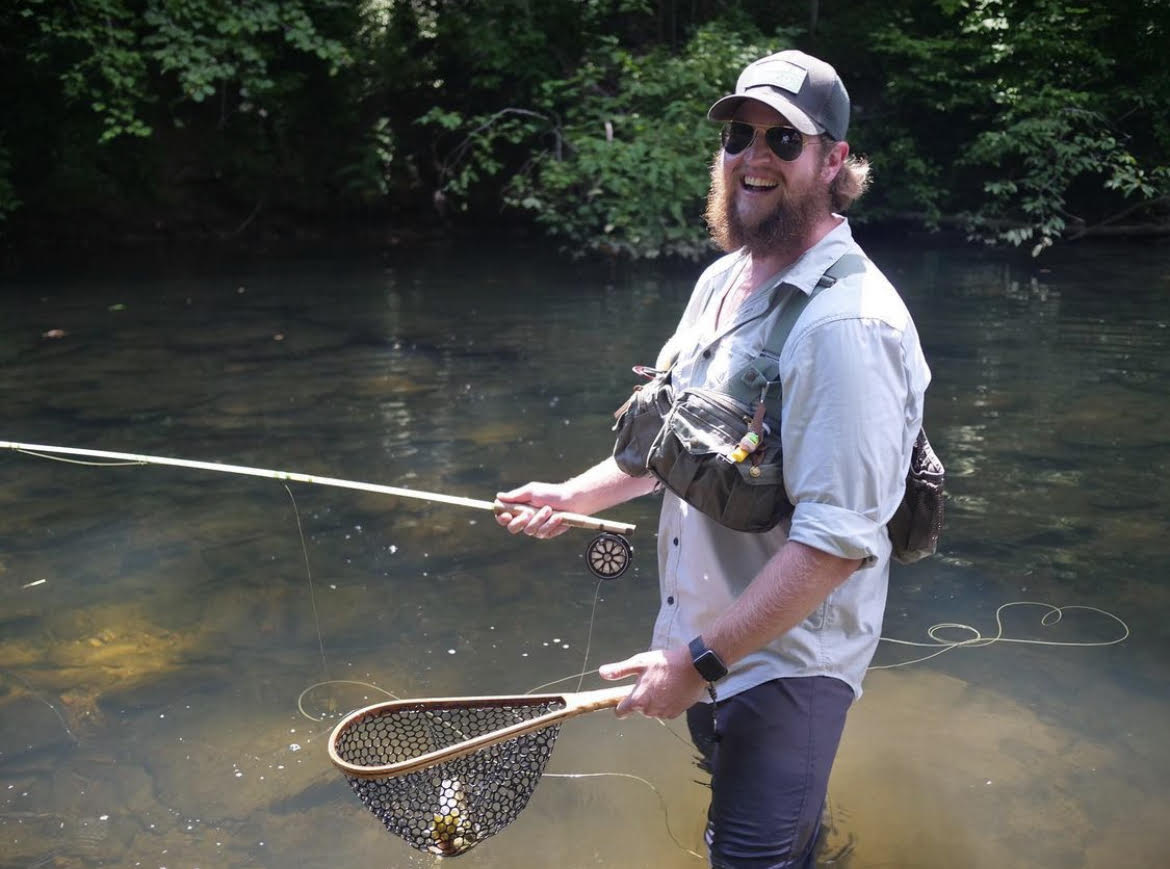
The author after landing a Warrior Bass underneath an overhanging tree in Alabama. Photo Courtesy of Steven Scoggins.
Stream Tactics
On-water tactics for Redeye Bass are very similar between both conventional fishing and fly fishing. These bass are found in rivers and creeks with rocky substrate and flowing water. Rocks interrupting the water’s flow are known as shoals and shoal complexes that create runs, seams, plunge pools, and tailouts. A seam is where slower water meets faster water. A run is a series of rippled water moving over underwater rocks. A plunge pool is a deeper section of water below a small waterfall. Tailouts are the calmer water just downstream of a shoal complex. Redeye know each of these stream features well and angler knowledge of them will increase your chances of success exponentially.
Redeye Bass hover around moving current waiting for forage items to be swept downstream. The moving current creates a buffet line effect. Casting to any calm pocket of water around and in between these rocks is a great first attempt. Usually a Redeye will explode on your fly or lure seconds after it lands on the water. You can also drift your fly or lure down the seams and into the calmer water. The most important key is to find moving water as these fish prefer current over stagnant pools. Varying your presentations from calm drifts to aggressive bursts can have different results and sometimes it can be just what the fish is looking for.
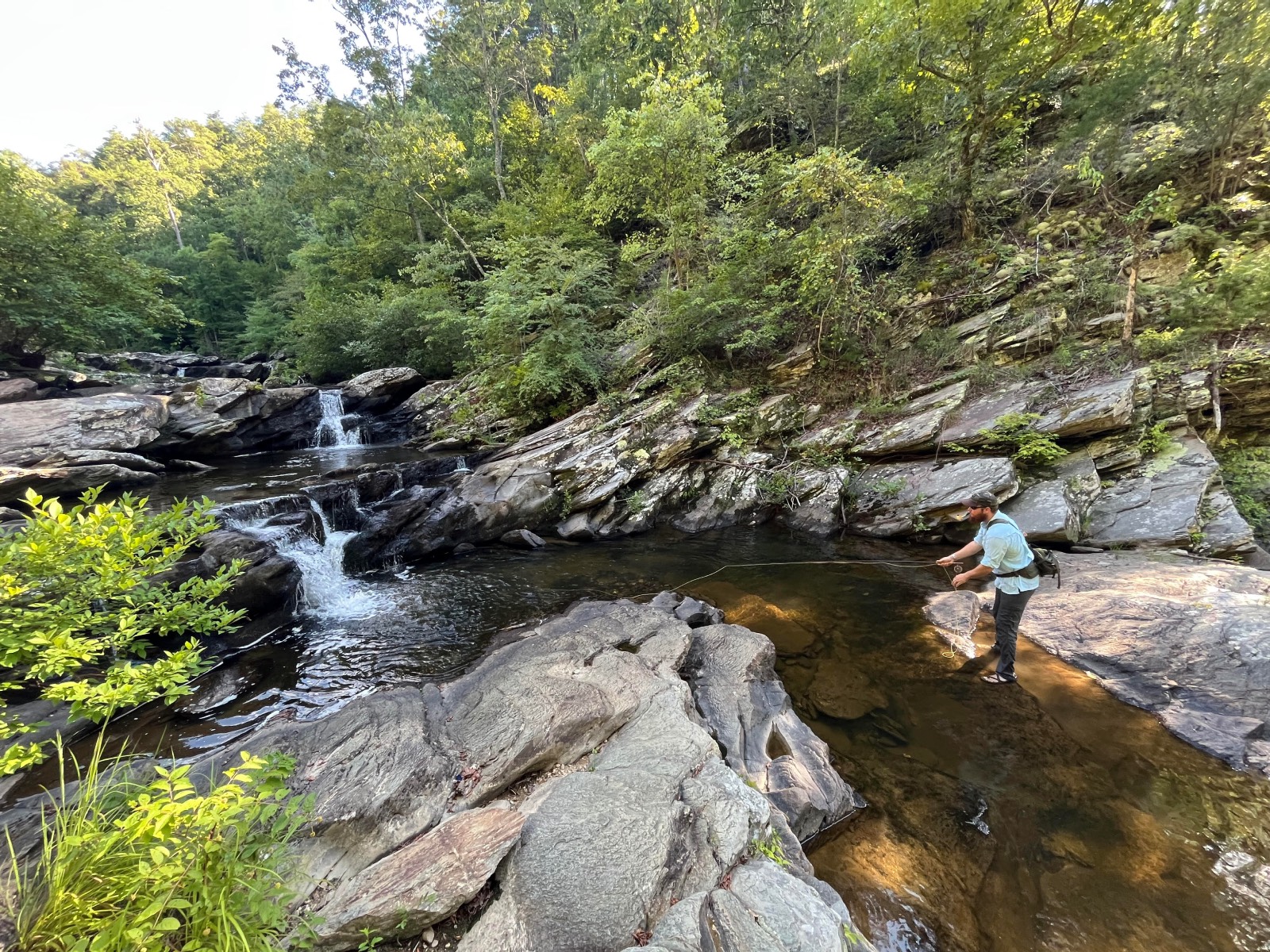
An idyllic Redeye Bass stream in northern Alabama filled with plunge pools and seams.
Fishing for Redeye Bass can become an addictive experience. Seeking these fish out in the backcountry National Forests and Parks will lead you to waters seldom fished by another angler. These waters are solitary and offer a true reprieve from the hustle and bustle of daily life. Effort will need to be exerted to get there, but the reward far outweighs the price paid in sweat. Redeye Bass are a true gift and a fish that has survived centuries of land development and stream changes deserves our utmost respect. Hit the water this Summer and experience one of the last remaining native and wild bass in the South. If you’re not careful, you may find yourself identifying as a Redeye angler!
















